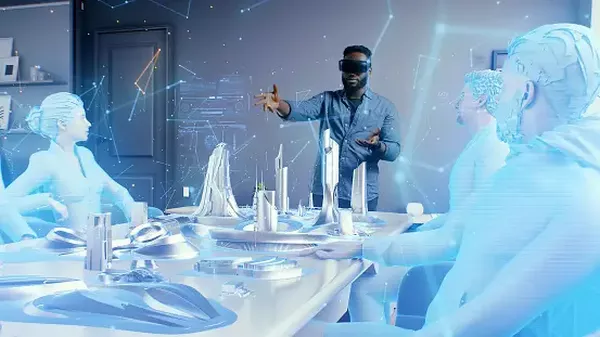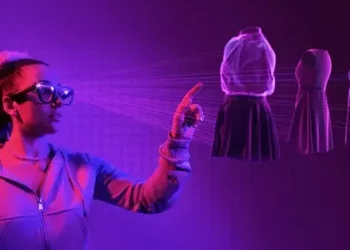The metaverse, a rapidly evolving digital universe, offers individuals the ability to create, explore, and engage with immersive virtual worlds. It is more than just a platform for entertainment; it represents the future of how we interact with digital spaces. Whether you’re a gamer, an entrepreneur, or a tech enthusiast, building your own world in the metaverse opens up exciting possibilities for creativity, collaboration, and even monetization. But creating a fully functional world in this digital frontier can seem like a daunting task.
In this article, we’ll guide you through the essential steps to creating your own world in the metaverse. We’ll break down complex processes into simple clauses, making it easy to follow and understand. You don’t need to be a tech wizard to bring your vision to life, but with a clear plan and a few fundamental tools, you can create a virtual world that reflects your imagination and creativity.
What Is the Metaverse?
The metaverse is a shared virtual space.
This space is persistent, meaning it continues to exist even when you’re not logged in. It is also highly immersive, allowing users to interact with each other and the environment in real-time. While the concept of the metaverse has been around for a while, advances in technology such as virtual reality (VR), augmented reality (AR), and blockchain have brought it closer to reality.
In the metaverse, users can create avatars, purchase virtual land, and participate in activities like gaming, socializing, and shopping. Importantly, the metaverse is decentralized, meaning that control isn’t concentrated in the hands of a single entity. Instead, users and creators alike have the power to shape the metaverse’s landscape.
Now, let’s explore how you can create your own world in this dynamic digital space.
Step 1: Choose a Metaverse Platform
Select a platform that aligns with your vision.
Different metaverse platforms cater to various needs and offer unique tools. Some platforms are more social, while others focus on gaming, education, or business. The platform you choose will have a significant impact on how you build and interact with your virtual world.
Here are a few popular metaverse platforms you can consider:
Decentraland: This decentralized platform is built on blockchain technology. It allows users to buy, develop, and sell land parcels using cryptocurrency. Decentraland is a good option if you want to integrate NFTs (non-fungible tokens) into your world or if you’re interested in creating a world with a strong focus on ownership and economic interaction.
The Sandbox: Known for its voxel-based design, The Sandbox is a user-friendly platform that offers tools for creating games and virtual experiences. It’s a great option for those interested in gaming or interactive experiences.
Roblox: This platform caters to a younger audience but offers powerful tools for creating games and social spaces. If your vision involves creating a more interactive, community-driven world, Roblox could be the right platform.
Horizon Worlds (by Meta): Horizon Worlds is Meta’s (formerly Facebook) entry into the metaverse. It is focused on social interaction, offering users tools to build and share virtual environments and experiences.
Once you’ve chosen your platform, familiarize yourself with its building tools, community guidelines, and monetization options.
Step 2: Acquire Virtual Land
Purchasing virtual land is often the first step in world creation.
Many metaverse platforms operate similarly to real estate markets, where users buy parcels of virtual land. In Decentraland or The Sandbox, for example, you’ll need to use cryptocurrency to purchase land. On platforms like Horizon Worlds or Roblox, virtual land may be freely available, but you may need to unlock certain features or pay for premium tools to enhance your world.
When purchasing virtual land, consider the following factors:
Location: Just like in the real world, location matters. Land in high-traffic areas or near popular worlds may be more expensive but can increase your visibility.
Size and Layout: Consider how much land you need for your project. If your world is large, you’ll want ample space to accommodate your vision.
Monetization Opportunities: If you plan to sell virtual goods or host paid events, choosing a platform that supports in-world transactions is essential.
Once you’ve acquired your land, you can begin building.
Step 3: Build the Infrastructure
Designing the foundation of your world starts with infrastructure.
The infrastructure includes buildings, landscapes, roads, and any physical features that will define the environment. You don’t need to be an architect or a coder to create these elements. Most metaverse platforms come with drag-and-drop tools that allow you to place structures and objects easily.
Use Ready-Made Templates: Many platforms offer pre-built structures, objects, and environments you can modify to fit your needs. This is a great option for beginners who may not have 3D modeling skills.
Custom Build: If you’re looking for a more personalized touch, you can create custom buildings and objects. Tools like Blender, a free 3D modeling software, can help you design complex shapes and structures. Some platforms also have in-platform modeling tools that simplify the process.
Consider the Theme: Is your world going to be futuristic, medieval, or naturalistic? The theme you choose will dictate the design of your infrastructure. For instance, if you’re creating a medieval world, castles, cobblestone roads, and marketplaces might be part of your design. If it’s a futuristic space, think of sleek buildings, floating platforms, and neon lights.
Plan for User Interaction: Don’t forget that your world needs to be navigable and engaging for users. Make sure there are clear paths, interactive elements, and spaces that invite exploration.
Step 4: Populate Your World
A world isn’t complete without its inhabitants.
In the metaverse, your world can be populated with both AI (artificial intelligence) entities and real users. Depending on the platform, you may have the ability to create NPCs (non-player characters) that serve various functions within your world.
NPCs: These characters can guide users through your world, offer quests, or simply provide background activity to make your world feel more alive. Many platforms allow you to program simple behaviors for NPCs, such as walking around, giving information, or interacting with users.
Invite Real Users: To bring real users into your world, you’ll need to market it. Whether through social media, platform-specific communities, or influencer partnerships, make sure to promote your world to attract visitors.
User-Created Content: Some platforms, like Roblox and The Sandbox, allow users to contribute content to your world. For instance, users could design their own buildings, games, or avatars to enhance the experience of your world. Encouraging user participation can make your world feel more dynamic and inclusive.
Step 5: Add Interactive Features
Interaction is key to creating an engaging virtual world.
Beyond the visuals, your world should offer activities, games, or tasks for users to enjoy. Depending on the platform you’re using, there are various ways to introduce interactivity:
Mini-Games and Challenges: You can create small games or challenges within your world. These could range from puzzles and mazes to treasure hunts and competitions. The more engaging your world is, the more likely users are to return.
Virtual Commerce: If you plan on monetizing your world, consider adding virtual stores or booths where users can buy digital goods, skins, or NFTs. Platforms like Decentraland and The Sandbox are particularly conducive to NFT-based transactions.
Social Interaction Spaces: Create spaces where users can hang out, chat, and collaborate. A virtual café, park, or concert hall can be a great addition to your world. Social spaces encourage user interaction, helping build a community around your virtual environment.
Step 6: Test and Optimize
Before launching your world to the public, make sure it functions smoothly.
Testing is an essential step to ensure that everything in your world works as expected. Whether it’s walking through the environment to check for glitches or testing interactive features to ensure they respond correctly, thorough testing will improve the user experience.
User Feedback: If possible, invite a small group of users to test your world before the full launch. Their feedback will help you identify any issues or areas for improvement that you might have missed.
Optimize for Performance: Depending on the complexity of your world, it may require optimization to ensure that users with various devices can access it without performance issues. Some platforms offer optimization tools that allow you to adjust graphics settings, loading times, and interactions for smoother gameplay.
Step 7: Launch and Promote Your World
Once your world is ready, it’s time to launch it to the public.
Make sure your world is accessible to users and that you’ve taken care of any final optimizations. After the launch, promotion is crucial for attracting visitors.
Social Media Marketing: Share your world on platforms like Twitter, Instagram, and Facebook to attract attention. You can also create videos or livestreams of your world to give potential visitors a preview of what to expect.
Collaborations: Partner with influencers or other content creators in the metaverse space to help promote your world. A well-timed partnership can introduce your world to a broader audience.
Host Events: Consider hosting special events in your world, such as live performances, contests, or in-world meetups. These events will encourage people to visit and spread the word about your creation.
See also: How to Make an Avatar in the Metaverse
Conclusion
Creating your own world in the metaverse is an exciting opportunity to bring your imagination to life in a digital space. By choosing the right platform, acquiring virtual land, building infrastructure, and adding interactive features, you can craft a virtual world that is not only visually stunning but also engaging for users. With the right promotion, your world could become a thriving hub within the metaverse ecosystem.
Related topics:
How to Create a Virtual World in the Metaverse

















